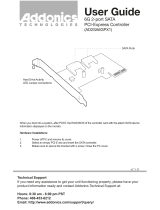- 5 -
Chapter 3 Drivers Installation .......................................................................................61
3-1 Installing Chipset Drivers ............................................................................... 61
3-2 Application Software ...................................................................................... 62
3-3 Technical Manuals ......................................................................................... 62
3-4 Contact........................................................................................................... 63
3-5 System ........................................................................................................... 63
3-6 Download Center ........................................................................................... 64
3-7 New Utilities ................................................................................................... 64
Chapter 4 Unique Features...........................................................................................65
4-1 Xpress Recovery2 ......................................................................................... 65
4-2 BIOS Update Utilities ..................................................................................... 68
4-2-1 Updating the BIOS with the Q-Flash Utility .......................................................... 68
4-2-2 Updating the BIOS with the @BIOS Utility ............................................................71
4-3 EasyTune 6 .................................................................................................... 72
4-4 Dynamic Energy Saver
™
2.............................................................................. 73
4-5 Q-Share ......................................................................................................... 75
4-6 Smart 6
™
....................................................................................................... 76
4-7 Auto Green ..................................................................................................... 80
4-8 eXtreme Hard Drive (X.H.D) .......................................................................... 81
4-9 Cloud OC ....................................................................................................... 82
4-10 TouchBIOS..................................................................................................... 83
Chapter 5 Appendix ......................................................................................................85
5-1 ConguringSATAHardDrive(s) .................................................................... 85
5-1-1 ConguringIntelZ68SATAControllers .............................................................. 85
5-1-2 ConguringMarvell88SE9128SATAControllers .................................................93
5-1-3 Installing the SATA RAID/AHCI Driver and Operating System ............................ 98
5-2 ConguringAudioInputandOutput ............................................................ 106
5-2-1 Conguring2/4/5.1/7.1-ChannelAudio ............................................................... 106
5-2-2 ConguringS/PDIFOut .......................................................................................108
5-2-3 Enabling the Dolby Home Theater Function .......................................................109
5-2-4 ConguringMicrophoneRecording .....................................................................110
5-2-5 Using the Sound Recorder ..................................................................................112
5-3 Troubleshooting ............................................................................................113
5-3-1 Frequently Asked Questions ...............................................................................113
5-3-2 Troubleshooting Procedure .................................................................................114




















